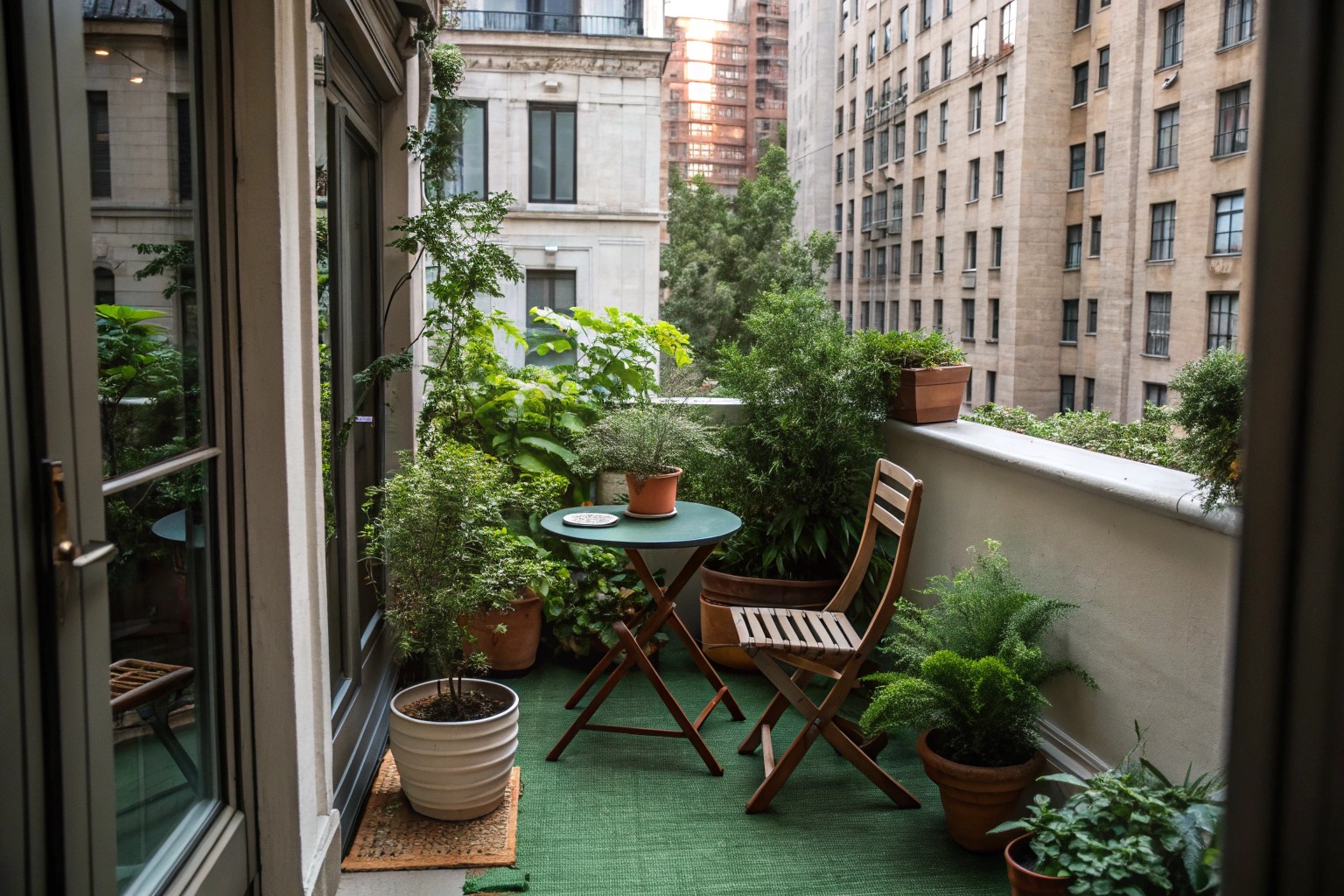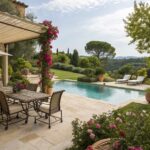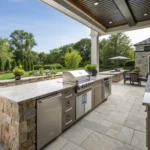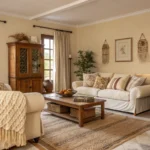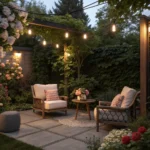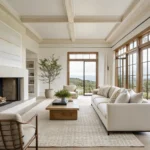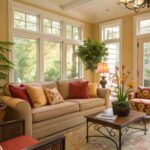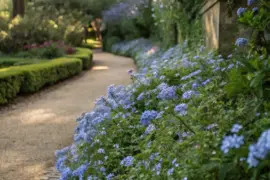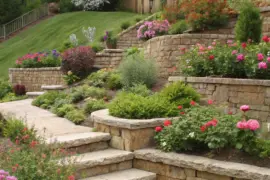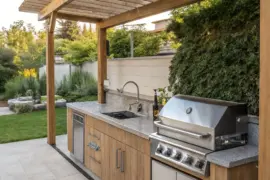Creating tranquil outdoor sanctuaries within bustling urban environments has become both an art and a necessity for modern city dwellers. The concept of “urban nesting” represents a thoughtful approach to transforming concrete-dominated spaces into lush, inviting retreats that reconnect us with nature’s calming influence.
Understanding the Urban Softscape Philosophy
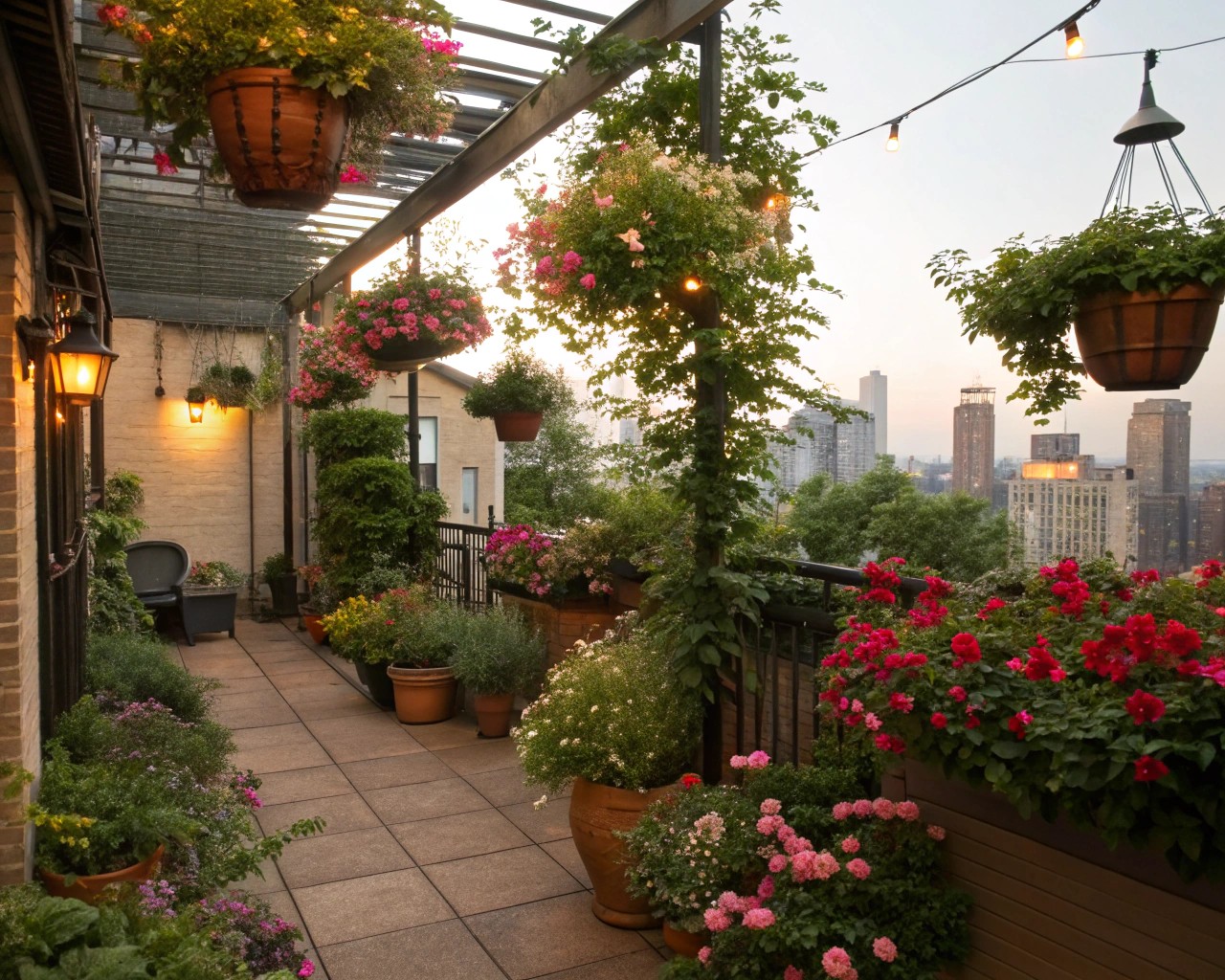
The foundation of successful urban nesting lies in understanding the delicate balance between hardscape and softscape elements. While hardscape provides the structural bones of outdoor spaces—patios, walkways, walls, and decking—softscape breathes life into these areas through plants, flowers, trees, and organic materials.
In urban environments, we often inherit spaces dominated by hard surfaces and angular lines. The challenge becomes introducing organic elements that soften these harsh edges while maintaining functionality. I’ve observed that the most successful urban outdoor spaces achieve what landscape professionals call the “50-50 rule”—approximately half structural elements balanced with half living, planted areas.
Core Elements of Urban Softscape Design:
| Hardscape Elements | Softscape Elements | Integration Opportunities |
|---|---|---|
| Concrete patios | Ground cover plants | Plant borders along edges |
| Retaining walls | Climbing vines | Vertical garden installations |
| Walkways | Ornamental grasses | Pathway plantings |
| Metal railings | Hanging baskets | Suspended garden systems |
The psychological impact of introducing softscape elements extends far beyond aesthetics. Living plants provide what researchers term “restoration” effects—reducing stress, improving air quality, and creating natural sound barriers against urban noise. This becomes particularly important in high-density environments where private outdoor space is limited.
Design Principles for Softening Urban Hardscape
The Layer Strategy
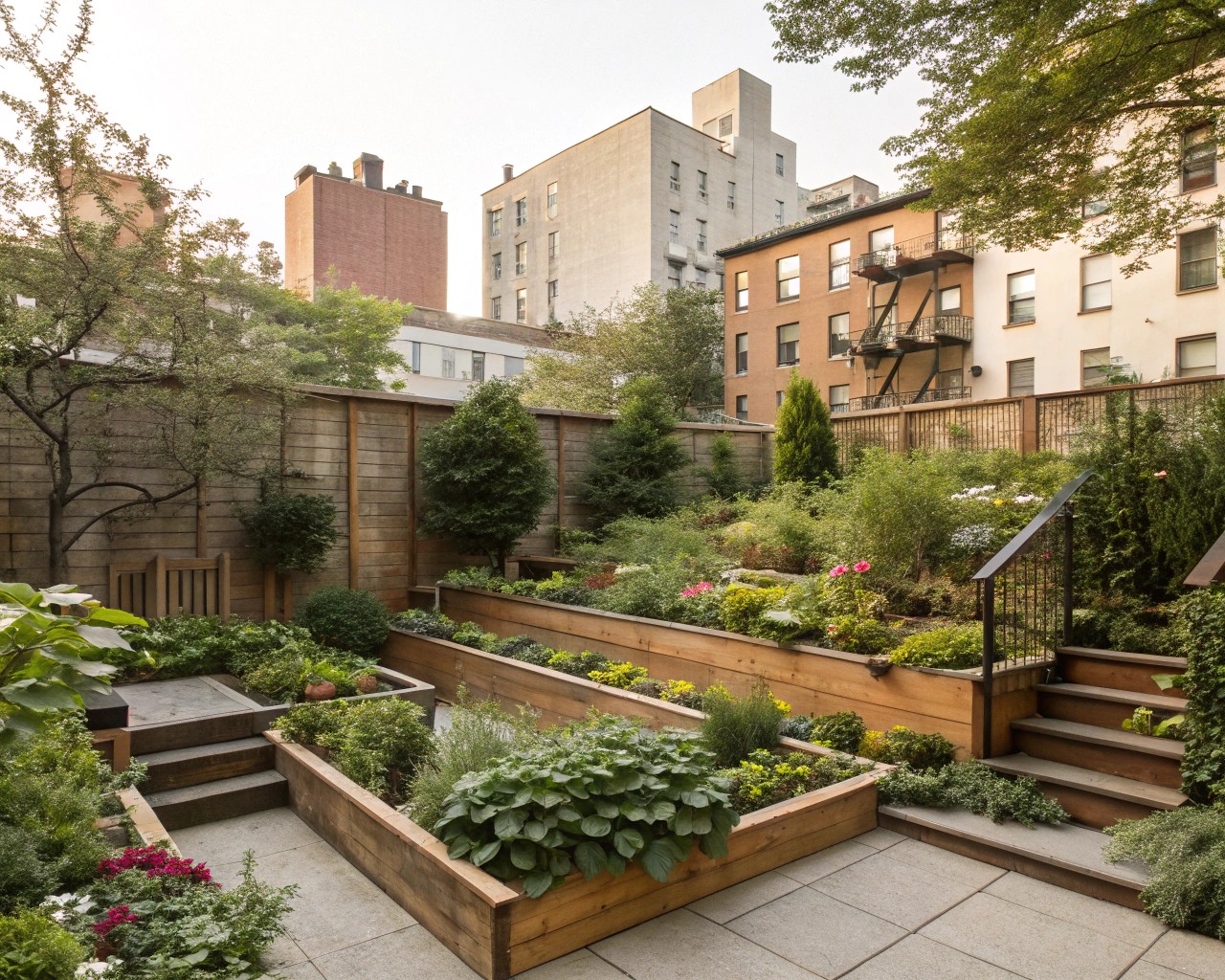
Successful urban softening employs a layering approach that creates depth and visual interest. This technique involves establishing three distinct levels:
Ground Level: Low-growing plants, ground covers, and decorative mulches that soften the transition between hard surfaces and planted areas.
Mid-Level: Shrubs, medium-height perennials, and ornamental grasses that provide structure and seasonal interest.
Overhead Level: Trees, tall climbing plants, and suspended elements that create natural canopies and privacy screens.
Color Psychology in Urban Spaces
When working with limited square footage, color selection becomes crucial for creating the illusion of expanded space. Cool colors—blues, greens, and purples—naturally recede, making small areas appear larger. I recommend incorporating these cooler tones in background plantings while using warm colors sparingly as accent points.
Recommended Color Palette for Small Urban Spaces:
- Primary (60%): Blue-green foliage plants, silver-leafed varieties
- Secondary (30%): Medium green shrubs, white flowering plants
- Accent (10%): Warm-colored flowers or foliage for seasonal interest
Vertical Integration Techniques
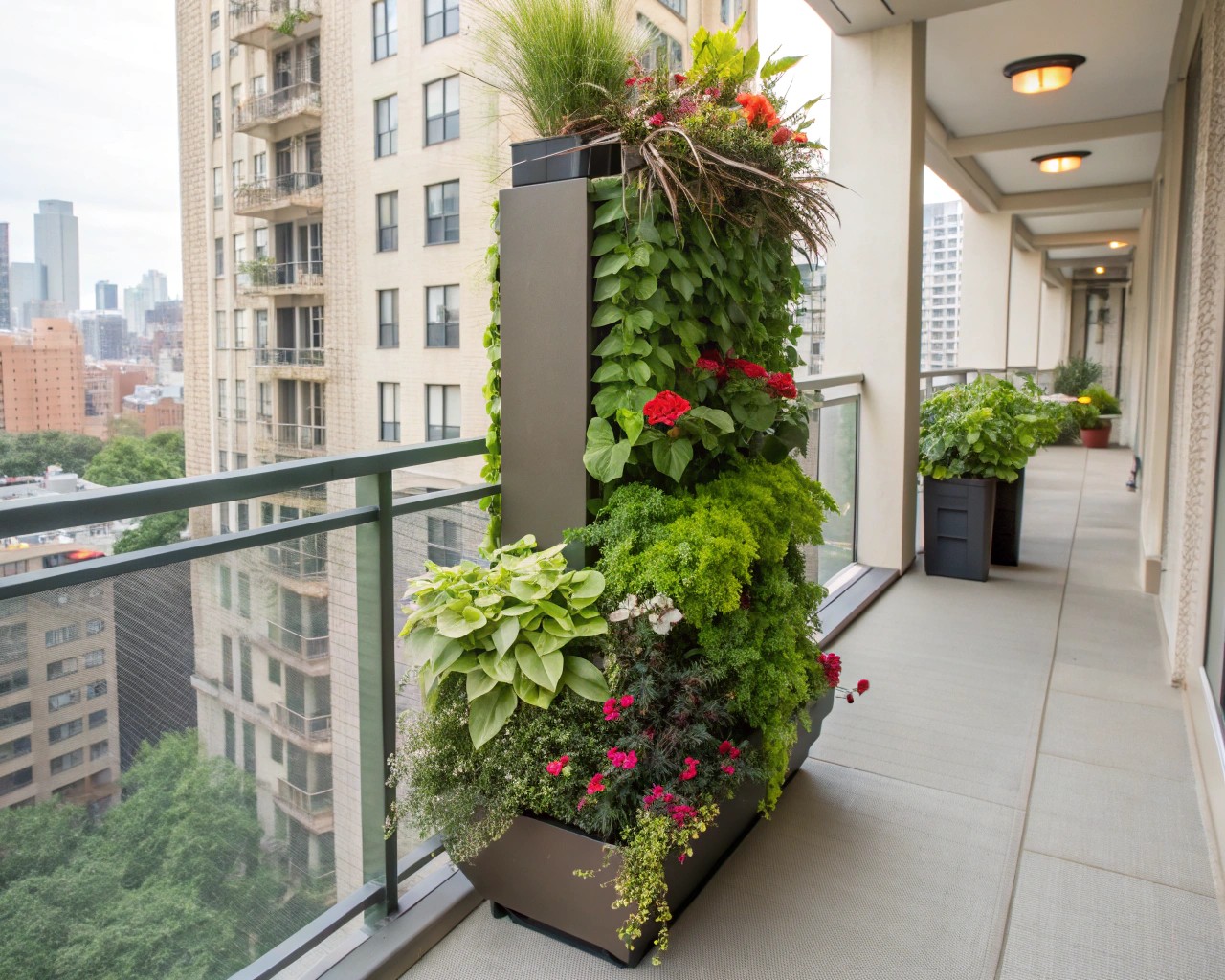
Urban spaces often require creative use of vertical surfaces to maximize planting opportunities. Strategic placement of climbing plants can transform stark walls into living artwork while providing privacy and noise reduction.
Effective Vertical Softening Methods:
- Wall-mounted planters at varying heights create visual rhythm
- Trellis systems support climbing vines and create green screens
- Hanging baskets add overhead interest without consuming ground space
- Tiered plant stands maximize growing space in minimal footprints
Space-Specific Urban Softening Solutions
Balcony Transformations
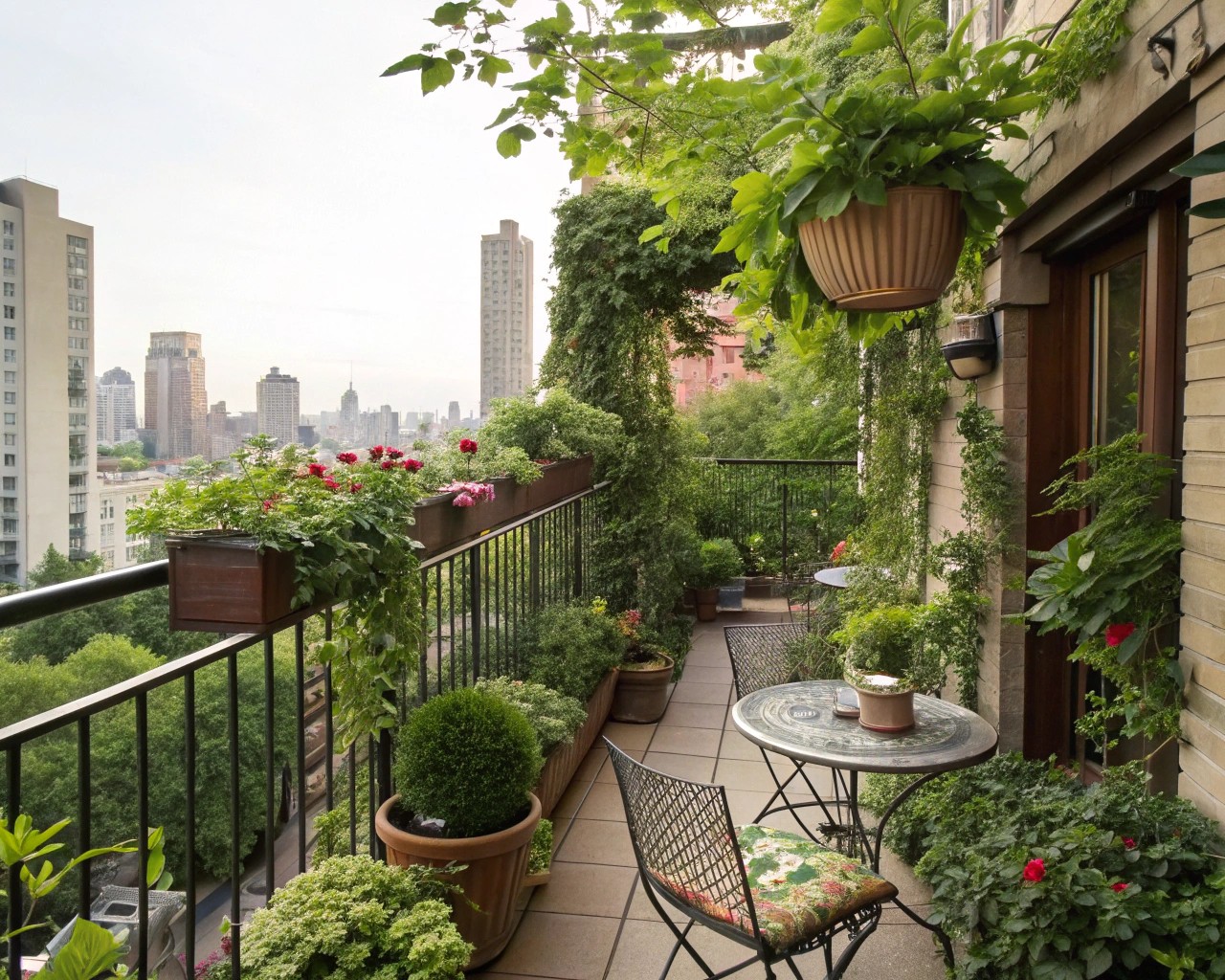
Balconies present unique challenges due to weight restrictions, wind exposure, and limited soil volume. The key lies in selecting appropriate containers and wind-resistant plant varieties.
Balcony Softening Checklist:
✓ Use lightweight containers (fiberglass, resin, or composite materials)
✓ Install windbreaks using tall planters or screens
✓ Create privacy with climbing plants on portable trellises
✓ Add artificial grass for immediate green coverage
✓ Incorporate weather-resistant outdoor rugs for comfort
For herb gardens on balconies, vertical ladder systems maximize growing space while providing easy kitchen access. Herbs like basil, mint, rosemary, and thyme thrive in container environments and offer both practical and aromatic benefits.
Micro-Courtyard Design
Drawing inspiration from traditional courtyard houses, even the smallest urban spaces can become tranquil retreats. The Micro Courtyard House project demonstrates how a mere 7.3 square meters can accommodate both functional living and peaceful outdoor space.
Essential Elements for Micro-Courtyards:
- Single focal tree for vertical interest and shade
- Water feature to mask urban noise and create ambiance
- Asymmetric plant arrangement to avoid rigid, cramped feeling
- Sliding glass doors to merge indoor and outdoor spaces
Rooftop Garden Integration
Rooftop environments require specialized attention due to extreme weather exposure, weight limitations, and accessibility challenges.
Rooftop Softening Strategies:
| Challenge | Solution | Plant Recommendations |
|---|---|---|
| Wind exposure | Windbreak plantings, low-profile plants | Ornamental grasses, low shrubs |
| Weight limits | Lightweight growing media, shallow-rooted plants | Sedums, herbs, compact perennials |
| Sun intensity | Shade structures, heat-tolerant varieties | Mediterranean plants, succulents |
| Drainage | Raised beds with proper drainage systems | Drought-tolerant natives |
Plant Selection for Urban Softening
Foundation Plants for Urban Environments
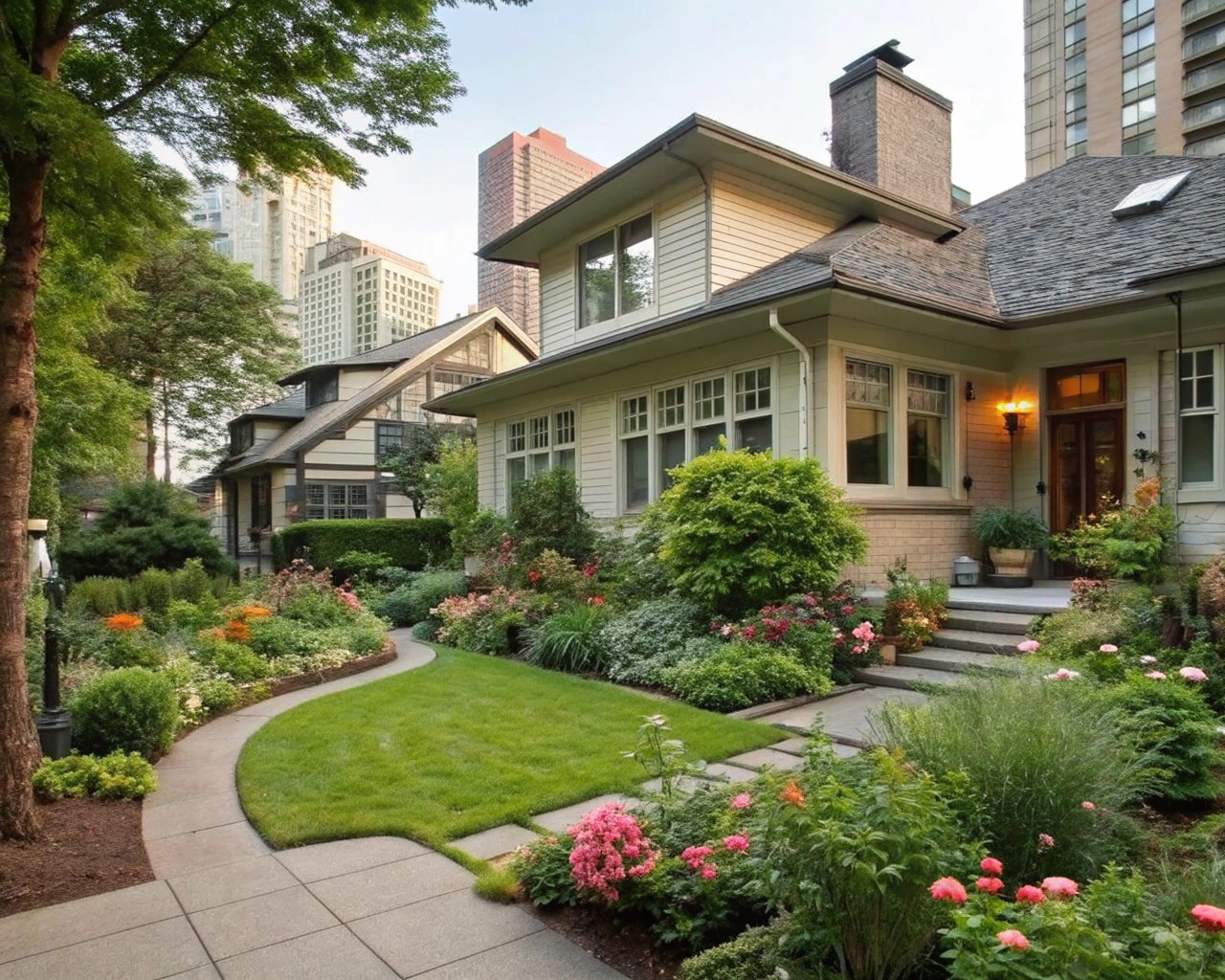
The backbone of any urban softscape consists of reliable, low-maintenance plants that provide year-round structure. These foundation plants should demonstrate tolerance for air pollution, limited root space, and variable watering conditions.
Tier 1: Structural Plants
– Small Trees: Japanese Maple (Acer palmatum), Serviceberry (Amelanchier canadensis)
– Large Shrubs: Boxwood (Buxus sempervirens), Hydrangea (Hydrangea macrophylla)
– Evergreen Structure: Dwarf conifers, compact hollies
Tier 2: Seasonal Interest Plants
– Spring Bloomers: Tulips, daffodils, flowering cherry
– Summer Performers: Lavender, salvia, ornamental grasses
– Fall Contributors: Asters, mums, ornamental kale
Climbing Plants for Vertical Softening
Vertical surfaces offer tremendous opportunity for adding green coverage without consuming precious ground space. Selecting appropriate climbing plants depends on support structure, light conditions, and desired coverage speed.
Fast-Growing Options (1-2 seasons to establish):
- Annual vines: Morning glory, nasturtiums, sweet peas
- Perennial climbers: Clematis, honeysuckle, jasmine
Long-Term Investment Plants (2-3 years to maturity):
- Woody vines: Boston ivy, Virginia creeper
- Flowering climbers: Climbing roses, wisteria (with careful pruning)
Container-Specific Selections
Urban softening often relies heavily on container gardening, which requires plants adapted to restricted root zones and variable moisture conditions.
High-Performance Container Plants:
| Plant Type | Varieties | Container Size | Special Notes |
|---|---|---|---|
| Ornamental Grasses | Fountain grass, Blue fescue | 12″+ diameter | Excellent texture, movement |
| Flowering Perennials | Geraniums, petunias | 8-10″ diameter | Continuous bloom |
| Foliage Plants | Coleus, caladium | 6-8″ diameter | Colorful leaves |
| Herbs | Basil, thyme, rosemary | 6″+ diameter | Dual purpose |
Integration Strategies for Hardscape and Softscape
Transition Zones
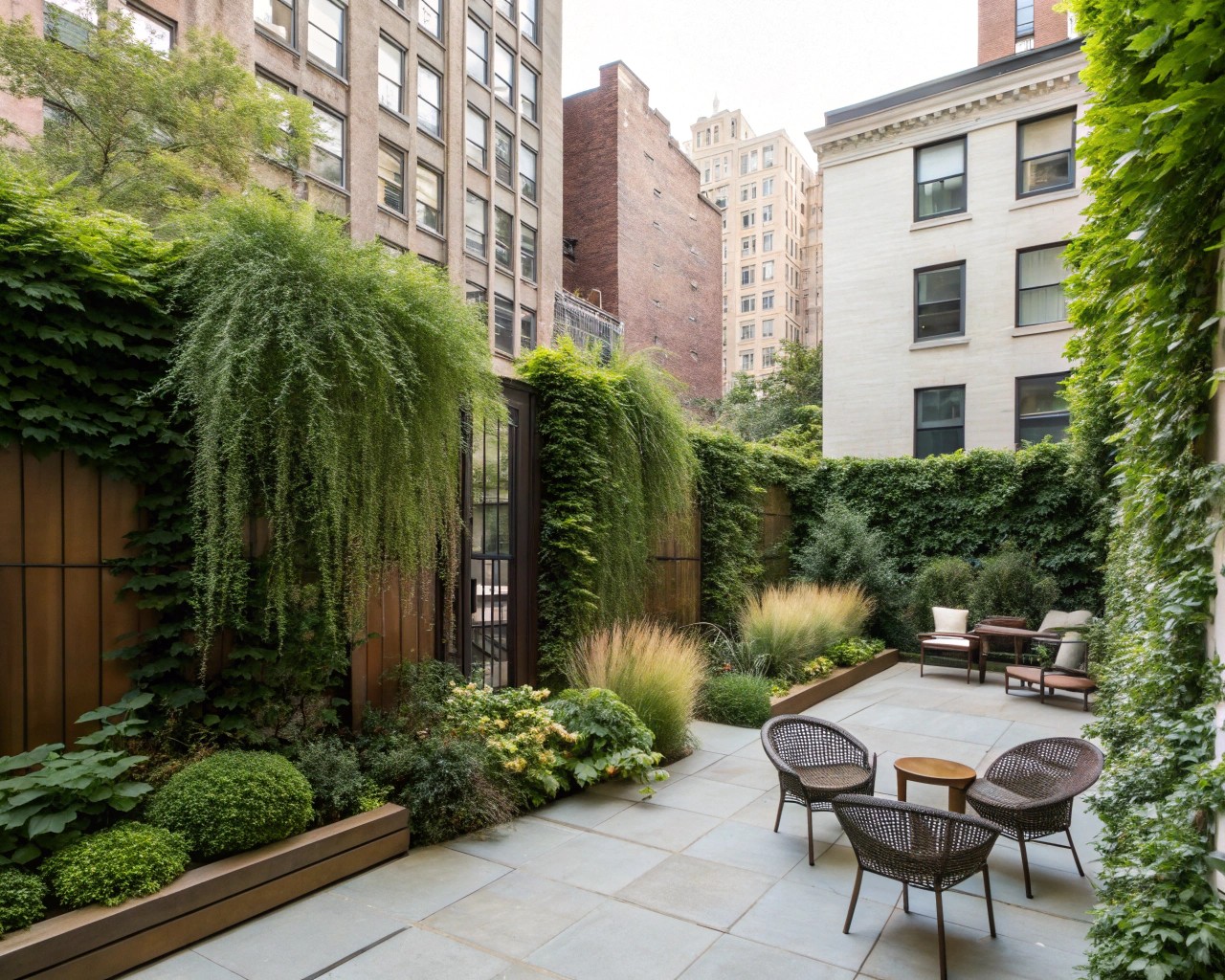
The most critical areas for successful urban softening occur at the boundaries between hard and soft elements. These transition zones require careful attention to create seamless integration rather than abrupt contrasts.
Effective Transition Techniques:
- Graduated Heights: Use plants of varying heights to create gentle transitions from ground level to vertical structures
- Overhanging Elements: Allow plants to spill over edges of containers and raised beds
- Textural Bridges: Incorporate materials that complement both hard and soft elements (natural stone, wood elements)
Edge Softening Methods
Hard edges create harsh visual lines that can make urban spaces feel uncomfortable and institutional. Strategic plant placement can dramatically soften these lines.
Professional Edge Softening Approaches:
- Asymmetric Groupings: Plant in odd-numbered clusters that naturally soften geometric lines
- Layered Plantings: Use plants of different heights to create depth and visual interest
- Spill-Over Effect: Allow plants to cascade over retaining walls and container edges
- Corner Softening: Place larger plants at corners of hardscape elements to round visual transitions
Furniture Integration
Outdoor furniture can serve dual purposes in urban softening—providing functionality while breaking up expanses of hard surfaces.
Strategic Furniture Placement:
- Position seating to create intimate conversation areas
- Use planters as natural room dividers
- Integrate storage benches that also support plant displays
- Choose furniture with organic shapes to contrast angular hardscape
Practical Implementation Strategies
Seasonal Adaptation Techniques
Urban environments present unique seasonal challenges that require adaptive softening strategies. The key lies in creating four-season interest while accommodating changing weather patterns.
Spring Activation Plan:
- Deploy cold-hardy annuals in containers
- Prune winter-damaged growth
- Apply slow-release fertilizers to established plantings
- Install seasonal wind protection for tender plants
Summer Intensification:
- Implement efficient watering systems (drip irrigation, self-watering containers)
- Provide temporary shade for heat-sensitive plants
- Maintain consistent moisture levels in containers
- Deadhead flowering plants for continuous bloom
Fall Transition Strategy:
- Plant cold-season annuals for extended color
- Prepare tender plants for winter protection
- Clean and store seasonal containers
- Apply winter mulch to in-ground plantings
Winter Interest Maintenance:
- Focus on evergreen plants and structural elements
- Use seasonal decorations to maintain visual interest
- Protect containers from freeze-thaw cycles
- Plan next season’s improvements
Maintenance Considerations for Urban Softscapes
Urban environments require modified maintenance approaches due to air pollution, limited access, and container-based growing conditions.
Weekly Maintenance Tasks:
✓ Container moisture assessment and watering
✓ Deadheading spent flowers
✓ Removal of damaged or diseased foliage
✓ Quick cleanup of debris
Monthly Maintenance Tasks:
✓ Fertilizer application to containers
✓ Pruning and shaping of fast-growing plants
✓ Pest and disease monitoring
✓ Seasonal plant rotation
Seasonal Maintenance Tasks:
✓ Comprehensive plant health assessment
✓ Container soil refresh or replacement
✓ Structural support maintenance (trellises, stakes)
✓ Planning and implementation of design improvements
Advanced Urban Softening Techniques
Micro-Climate Management
Urban environments create unique micro-climates that can be leveraged for successful plant growth. Understanding these conditions allows for strategic plant placement and enhanced growing success.
Heat Island Mitigation:
- Use light-colored containers to reduce root zone heating
- Position heat-sensitive plants in morning sun/afternoon shade locations
- Create shade using larger plants or temporary structures
- Implement reflective mulches to reduce soil temperature
Wind Protection Strategies:
- Install graduated windbreaks using taller plants
- Position containers in protected alcoves or corners
- Use temporary wind screens during extreme weather
- Select plants with flexible stems and small leaves for exposed areas
Water Management Systems
Efficient water use becomes critical in urban environments where traditional irrigation may be limited or impractical.
Smart Watering Solutions:
| System Type | Best Applications | Installation Complexity | Efficiency Rating |
|---|---|---|---|
| Drip irrigation | Large containers, permanent installations | Moderate | High |
| Self-watering containers | Individual plant displays | Low | Medium-High |
| Micro-spray systems | Group plantings | Moderate | Medium |
| Hand watering | Small collections, seasonal plants | Low | Variable |
Lighting Integration for Enhanced Softening
Strategic lighting extends the usability of urban outdoor spaces while highlighting softscape elements during evening hours.
Effective Lighting Strategies:
- Uplighting trees and large plants for dramatic effect
- Path lighting integrated with border plantings
- String lights woven through climbing plants for ambient illumination
- Solar accent lights placed within plant groupings for subtle definition
Case Studies in Urban Softening
Successful Balcony Transformation
A recent project involved transforming a 40-square-foot urban balcony from a stark concrete platform into a lush retreat. The client, a young professional in a high-rise apartment, wanted privacy from neighboring units and a space for morning coffee.
Design Elements Implemented:
- Tall planters with bamboo screens for privacy
- Tiered plant stands maximizing vertical growing space
- Self-watering containers for low maintenance
- Artificial grass sections for comfort underfoot
- Integrated seating with built-in storage
Results Achieved:
- 75% reduction in visible hard surfaces
- Complete privacy screening from neighbors
- Year-round green space with minimal maintenance
- Functional outdoor living area suitable for entertaining
Multi-Level Urban Courtyard
This project demonstrated how to soften a multi-level concrete courtyard space behind an urban townhouse. The challenge involved creating visual cohesion across different elevation levels while maintaining accessibility.
Key Design Solutions:
- Consistent plant palette across all levels
- Cascading plants connecting upper and lower areas
- Strategic placement of larger specimens as focal points
- Integration of water features for sound masking
Troubleshooting Common Urban Softening Challenges
Limited Growing Space Solutions
When square footage is at a premium, creative vertical and multi-functional approaches become essential.
Space-Maximizing Techniques:
- Hanging gardens suspended from railings or overhead structures
- Pocket planters mounted on walls or fences
- Multi-level plant stands creating growing space in compact footprints
- Living walls using modular planting systems
Air Quality and Pollution Mitigation
Urban plants face unique stresses from air pollution, requiring selection of tolerant species and protective measures.
Pollution-Tolerant Plant Selections:
- Trees: London plane, green ash, Norway maple
- Shrubs: Privet, barberry, spirea
- Perennials: Daylilies, hostas, ornamental grasses
- Annuals: Marigolds, petunias, impatiens
Weather Extremes Management
Urban environments often experience more extreme weather conditions due to heat island effects and wind tunnels between buildings.
Weather Protection Strategies:
- Temporary shade structures during heat waves
- Wind barriers using portable screens or temporary plantings
- Seasonal protection with covers or relocatable containers
- Microclimate creation using grouped plantings and strategic placement
Future Trends in Urban Softening
Technology Integration
Emerging technologies are revolutionizing urban gardening through smart monitoring systems, automated irrigation, and app-based plant care guidance.
Innovative Solutions:
- Soil moisture sensors with smartphone alerts
- Automated fertilizer delivery systems
- LED grow lights for shaded urban spaces
- Weather-responsive irrigation controllers
Sustainable Practices
Environmental consciousness drives new approaches to urban softening that emphasize resource conservation and ecological responsibility.
Sustainable Urban Softening Approaches:
- Native plant emphasis for reduced water and maintenance needs
- Rainwater collection and utilization systems
- Composting integration for container gardening
- Pollinator-friendly plant selections supporting urban biodiversity

